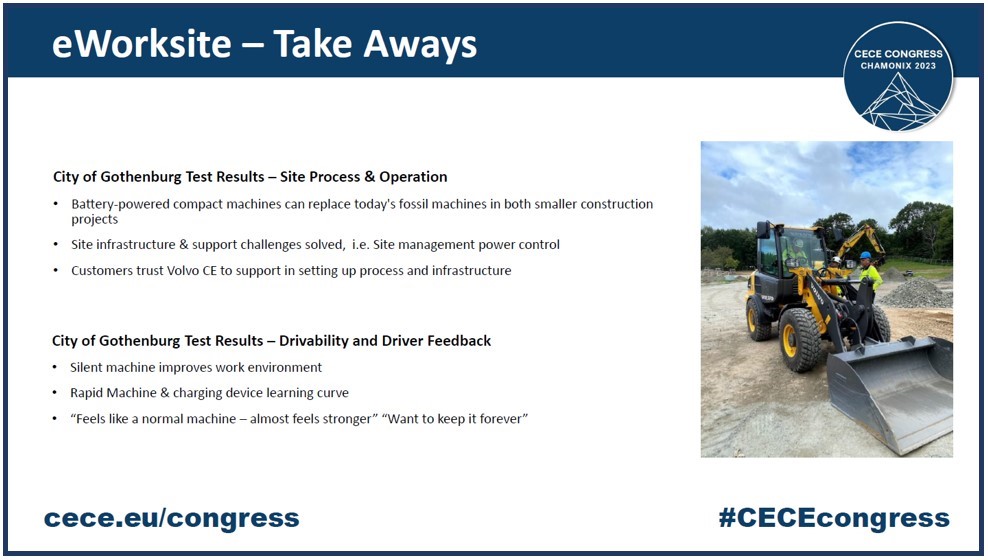E-Worksite research project
Carolina Diez Ferrer, Head of Advanced Engineering Programs at Volvo Construction Equipment, presented to the audience the eWorksite Research Project at Volvo CE. While introducing the main objectives and phases of the project, she first emphasised the importance, from the industry's side, of having a long-term vision to support society and assist customers in their journey towards sustainability.

The green transition will not be a binary shift but rather a gradual change that will be supported by technologies such as electrification, hydrogen fuel cells, and alternative fuels. To achieve the goal of becoming carbon neutral as a society and fulfilling the Paris Agreement, industries will need to change mindsets, business models, infrastructure, regulations, and support systems, but most importantly, it is crucial to ensure an effective collaboration with various stakeholders, including governments, society, and other parts of the industry. Volvo CE has set an ambitious goal to become 100% fossil-free by 2040, which includes not only their products but also their entire value chain.
The eWorksite project was initiated in 2021 and will run until 2023 in Göteborg, Sweden, which was recognised six years ago as the most sustainable city in the world, an element that made it the ideal location. The project aim was twofold: to demonstrate the effectiveness of electric construction equipment and how it can be used on a worksite, and to train the operators on how to use the machines in the most efficient way. The project also has, as an added value, the involvement and cooperation of the government, universities, and research institutes, as well as construction companies.
The first step of the project was to test the machines that were already on the market while also testing medium- and large-scale machines. In the first part of 2021, six different scenarios were tested using the L25 and ECR25 machines. In the first scenario and testing period of three weeks, the machines were used as utility machines in an 8-hour working day. The first scenario’s goal was to build a recreational park where, where the machines were used to set up the land; the second was a replication of the first with the aim of gathering more data and learnings from the first scenario; the third was a construction site for a new bicycle park, where the machines were used for pavement reconstruction; and the fourth was surface grounding construction, where the machines were used for reconstruction of payments.
The first two scenarios, similarly to the others, concluded that level 2 charging was sufficient for the construction machines and that they could be safely and effectively used in smaller construction projects. The loader could work for 8 hours before needing to be charged, and the excavator only needed to be charged during the operators' break time. Volvo CE also conducted its own analysis and found that infrastructure issues can be solved with proper site management and power control.
In conclusion, the machines were found to improve the work environment and have a quick learning curve, and customers trust the company to help with the transition to electric machines. The project is ongoing, and further activities and developments will be conducted in the future.

Go back to the Technical Bulletin